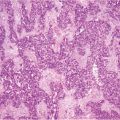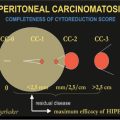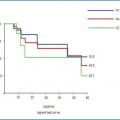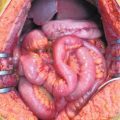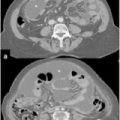Study
Type of study
Phase
Time
Drug
Id number*
Country
Feasibility Study of HIPEC for Patients With Stage III or Only Pleural Stage IV Ovarian Carcinoma in First-Line Therapy
Safety/efficacy
II–III
Primary
Cisplatin
NCT01709487
Belgium
Phase 3 Trial Evaluating Hyperthermic Intra-peritoneal Chemotherapy in Upfront Treatment of Stage IIIC Epithelial Ovarian Cancer (CHORINE)
Randomized
III
Primary
Cisplatin + paclitaxel
NCT01628380
Italy
Quality of Life and Survivorship Care in Patients Undergoing Hyperthermic Intraperitoneal Chemotherapy (HIPEC) (HOPE)
Efficacy
n.p.
Primary recurrence
NCT01126346
USA
Surgery and Chemotherapy With or Without Chemotherapy After Surgery in Treating Patients With Ovarian, Fallopian Tube, Uterine, or Peritoneal Cancer
Safety
n.p.
Primary recurrence
Cisplatin, carboplatin, PLDH, Paclitaxel, gentamicin
NCT01970722
USA
Intraoperative Hyperthermic Intraperitoneal Chemotherapy With Ovarian Cancer
Randomized
III
Primary recurrence
Cisplatin
NCT01091636
Korea
Safety and Pharmacokinetics of Intraoperative Hyperthermic Intraperitoneal Chemoperfusion (HIPEC) With Cisplatin to Treat Platinum-sensitive Recurrent Ovarian Cancer
Nonrandomized
I
Recurrence
Cisplatin
NCT01387399
Germany
Hyperthermic Intraperitoneal Chemotherapy (HIPEC) in Ovarian Cancer Recurrence (HORSE)
Randomized
III
Recurrence
Cisplatin
NCT01539785
Italy
Outcomes After Secondary Cytoreductive Surgery With or Without Carboplatin Hyperthermic Intraperitoneal Chemotherapy (HIPEC) Followed by Systemic Combination Chemotherapy for Recurrent Platinum- Sensitive Ovarian, Fallopian Tube, or Primary Peritoneal Cancer
Randomized
II
Recurrence
Carboplatin
NCT01767675
USA
A Phase II Combined Modality Protocol of Debulking Surgery With HIPEC Followed by Intraperitoneal Chemotherapy for the Treatment of Recurrent Ovarian, Primary Peritoneal and Fallopian Tube Cancers
Safety/efficacy
II
Recurrence
Cisplatin
NCT01659554
USA
Secondary Debulking Surgery ± Hyperthermic Intraperitoneal Chemotherapy in Stage III Ovarian Cancer (OVHIPEC)
Randomized
III
Recurrence
Cisplatin
NCT00426257
Netherlands
Hyperthermic Intra-Peritoneal Chemotherapy (HIPEC) in Relapse Ovarian Cancer Treatment (CHIPOR)
Randomized
III
Recurrence
Cisplatin
NCT01376752
France
Carboplatin, Paclitaxel and Gemcitabine With or Without Bevacizumab After Surgery in Treating Patients With Recurrent Ovarian Epithelial Cancer, Primary Peritoneal Cavity Cancer, or Fallopian Tube Cancer
Randomized
III
Recurrence
Carboplatin, paclitaxel, gemcitabine, bevacizumab
NCT00565851
USA
25.8 New Trials in Gastric Cancer
Regarding the treatment of GC, a recent French protocol is ongoing: Glehen et al. [11] stress the importance of validating HIPEC efficacy in European and Caucasian patients with IP recurrence from GC, as was previously done in Asian patients [11]. The objective of the D2 Resection and HIPEC (Hyperthermic Intraperitoneal Chemoperfusion) in Locally Advanced Gastric Carcinoma (GASTRICHIP) prospective, open, randomized, multicenter, phase III clinical study is to evaluate the effects of HIPEC with oxaliplatin 250 mg/m2 at 42–43°C for 30 min.
Research is focusing on new drugs with different targets. Recent studies analyzed the importance of vascular endothelial growth factor (VEGF) in malignant ascites to improve peritoneal liquid production and neoangiogenesis [47, 48]. In EOC, bevacizumab IV was tested. The only indication for this treatment is in patients with advanced OC with poor prognostic indicators (stage IV or suboptimal debulking) [49]. Nevertheless, trials with other antiangiogenic drugs are ongoing. Their use has also been studied in HIPEC. The Lyon group, in a recent randomized phase II study [47] of patients with malignant ascites from GC with synchronous PC, obtained a clinical effect after IP infusion of catumaxomab—a nonhumanized chimeric antibody that blocks epithelial-cell adhesion molecule (EpCAM), T lymphocyte, CD3, accessory-cell, and Fcγ receptors. Indeed, in GC, this molecule is expressed in 90 % of cases, and IP infusion of catumaxomab could efficiently treat microscopic residual disease after CRS.
The aim of a US safety/efficacy study [50] is to determine the safety of a laparoscopic approach for HIPEC administration. Primary outcome is OS; secondary outcomes are safety and toxicity. The study arm receives mitomycin-C and cisplatin for 1 h on day 1 through three or four small abdominal incisions. After IP chemotherapy, the liquid is removed and a peritoneal washing and, eventually, biopsies are performed. Patients receive sodium thiosulfate IV to protect the kidneys.
Another ongoing US study [51] is evaluating technical parameters (CRS CC, achievement of hyperthermia, and morbidity and mortality rates) in patients with PC from CRC, GC, appendiceal, pseudomyxoma peritonei (PMP), and malignant peritoneal mesothelioma (MPM) origin undergoing CRS plus HIPEC with mitomycin-C (40 mg for 90 min).
The aim of a Spanish nonrandomized multicentric phase II study [52] is 1C level of evidence in terms of DFS and OS in patients with PC from GC. The strategy is to validate two new treatment schemas in three phases: In phase I, patients undergo IP infusion (through a peritoneal catheter implant) of docetaxel (30 mg/m2) and cisplatin (30 mg/m2) and IV administration of 5-FU (200 mg/m2/day, 7 days/week for 2 weeks) simultaneously with two cycles of IP administration. Phase II involves CRS plus HIPEC (mitomycin-C 15 mg/m2 plus Adriamycin 15 mg/m2 at 42–43°C for 60 min) and simultaneous IV administration of 5-FU (400 mg/m2) plus leucovorin (20 mg/m2) for 10 min at the beginning of peritoneal perfusion. In the phase III, adjuvant chemotherapy with docetaxel (75 mg/m2), cisplatin (75mg/m2), and 5-FU (750mg/m2 day) is administered 8–12 weeks after surgery.
A German RCT study [53] compared patients with GC with IP free tumor cells (≥ T2, < T4, M0, N±) in two arms: in the experimental arm, HIPEC with mitomycin-C and cisplatin was administered after gastrectomy. In the control group, surgery only was performed. The primary outcome is PC-free survival at 5 years; the seconds is DFS at 5 years. A Chinese trial [54] is comparing different chemotherapy regimens with oxaliplatin and paclitaxel in HIPEC from GC to evaluate OS as primary outcome and safety and adverse events.
Table 25.2 summarizes new trials for treating GC.
Table 25.2
Ongoing clinical trial on HIPEC in gastric cancer
Study | Type of study | Phase | Drug | ID number* | Country |
|---|---|---|---|---|---|
D2 Resection and HIPEC (Hyperthermic Intraperitoneal Chemoperfusion) in Locally Advanced Gastric Carcinoma (GASTRICHIP) | Randomized | III | Oxaliplatin | NCT01882933 | France |
Laparoscopic Hyperthermic Intraperitoneal Chemoperfusion (HIPEC) for Metastatic Gastric Cancer | Safety/efficacy | II | Mitomycin-C, cisplatin | NCT02092298 | USA |
Single-Arm Study Treating Patients of Peritoneal Surface Malignancy (Colorectal, Appendical, Pseudomyxoma, Gastric) With Cytoreductive Surgery and Hyperthermic Intraperitoneal Mitomycin C | Safety/efficacy | II | Mitomycin-C | NCT02040142 | USA |
Clinical Trial at Neoadjuvant Peritoneal and Systemic Chemotherapy Plus HIPEC in Gastric Carcinomatosis | Safety/efficacy | II | Docetaxel, cisplatin, mitomycin-C, Adriamycin, leucovorin Mitomycin-C | NCT01342653 | Spain |
Randomized Controlled Trial to Prevent Peritoneal Seeding in Gastric Cancer cisplatin (HIPEC Stomach) | Randomized | II–III | Mitomycin-C, cisplatin | NCT01683864 | Germany |
Sequential HIPEC of Oxaliplatin and Paclitaxel for Gastric Cancer Patients With Peritoneum Metastasis (SHOP-G01) | Safety | II | Oxaliplatin, paclitaxel | NCT01471132 | China |
25.9 New Trials in Colorectal Cancer
Ongoing is a US randomized phase II trial [55], the first study comparing EPIC vs. HIPEC for CRC and appendiceal cancer after CRS (< 2.5 mm). Drug regimens used during HIPEC and EPIC are mitomycin-C for the first one and floxuridine and leucovorin for the second one. Primary outcome is DFS at 3 years. A French multicenter phase III randomized trial [56] compares follow-up with explorative laparotomy plus HIPEC to simple follow-up in patients with CRC initially treated with surgery and adjuvant chemotherapy and are at high risk of developing PC. After the first tumor resection, patients undergo adjuvant treatment [6 months with 5-fluorouracil, leucovorin, and oxaliplatin (FOLFOX-4) regimen]. If the recurrence risk is low, the patient is not randomized; if it is high, the patient will be randomized to surveillance alone (control group) or exploratory laparotomy plus HIPEC (experimental group).
Stay updated, free articles. Join our Telegram channel

Full access? Get Clinical Tree



